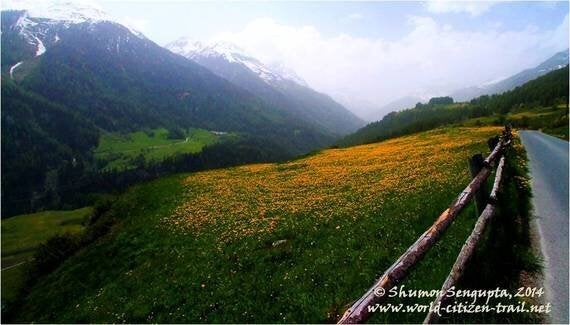
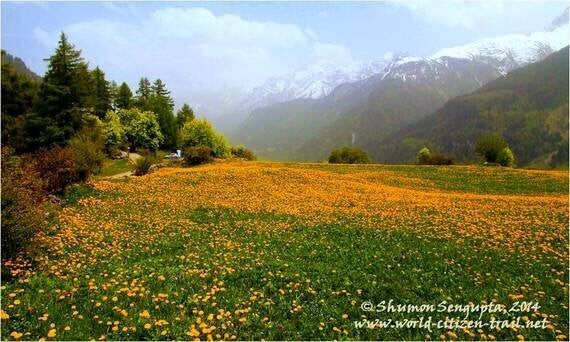
TheEngadine region is a stunningly beautiful area and I just can't say enough about it. The Upper and Lower Engadine valleys fall in the eastern corner of Switzerland, south of the Alps, bordered by Austria, Italy and the principality of Lichtenstein. The river Inn (or En) which originates in the snow, ice and glacier clad lofty Bernina mountains flows through the valley along its little towns and numerous pastoral villages and hamlets.
This relatively remote part of Switzerland is now connected round the year with most of the other regions through the world's longest meter gauge railway tunnel - the nearly 20km long Vereinarail tunnel.
This part of Switzerland has vast expanses of pristine countryside which cradle quaint and remote villages, where vestiges of very old rural traditions and ways of life continue to this day. In these villages, you find facades of heritage houses that have beautiful 'Sgraffito' murals and decorations.
We first visited the village of Guarda and from there we walked leisurely downhill along the trail for an hour and half over 4.7 kilometers to descend into the village of Ardez. We walked by the hill sides along a meandering narrow road, while taking in the far ranging views of the snow clad Alps that framed the lush green meadows and valleys thickly carpeted with a profusion of wild spring flowers. As we approachedArdez from above, at a distance we could see the beautiful village with its little railway station at its edge.
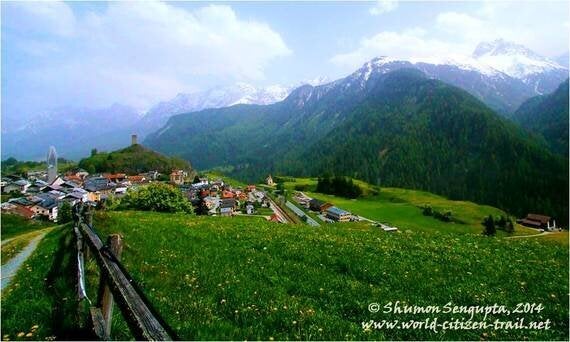
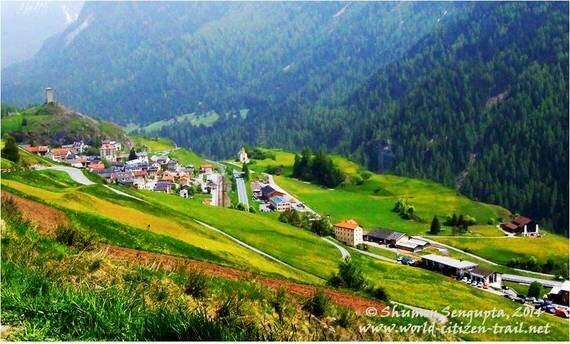
On a rocky spur towering in one side of Ardez village, there is small ruined Steinsberg castle/fort built in 1206 and a narrow-steeple church dating from 1577. To the south of the village at a distance, you can see the jagged and imposing peaks of the Swiss Dolomites.Ardez is located between Scuol and Guarda. It is close to the Swiss National Park.
Romansch, the ancient Latin based language is the main language spoken in Ardez, alongside German. This Romansch language was brought to the valleys of Engadine over two thousand years back by the Rhaetian tribe when they were expelled out of Italy by the Celts. This rare language, with its dwindling number of speakers has managed to survive and take on a form of its own through five different dialects in these isolated little villages of Engadine valley.
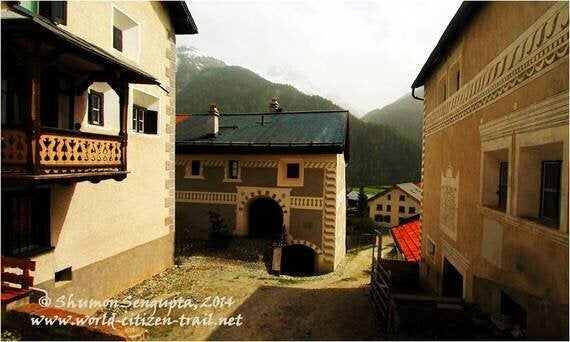
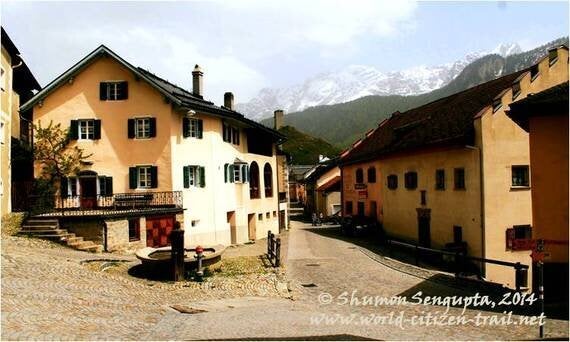
The details of the elaborate and complex Sgraffito murals in this 400 year old village are indeed very impressive. We noticed that the designs were executed in three different ways. They were 1) either painted freehand in beautiful pastel shades, 2) or stenciled in bold mono-colors 3) or etched into the wet outer layer of white lime plaster while it dried, revealing the darker color of the layer of plaster below, as per the designs etched.
Each of these techniques had their own aesthetic impact, although I thought the third technique, despite being in mono-color and monochrome, was the most subtle, elegant and beautiful. And the designs ranged from simple borders of doors, windows and outer walls and basic geometric patterns to very detailed and complex flowing abstract designs and murals.
We also came across stylized (and often esoteric) messages in Romansch, etched on walls of some of the houses. Every house seemed to have a character, rather a life and personality of its own and appeared to speak to us in the language of silence.
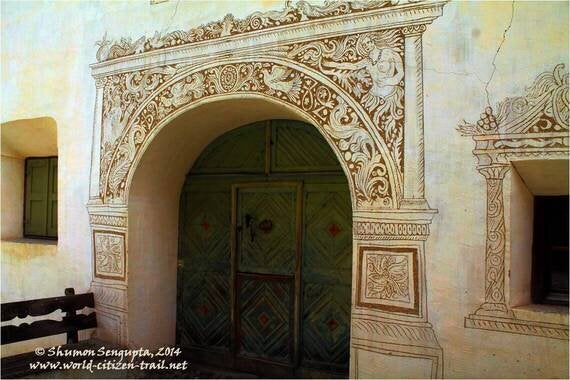
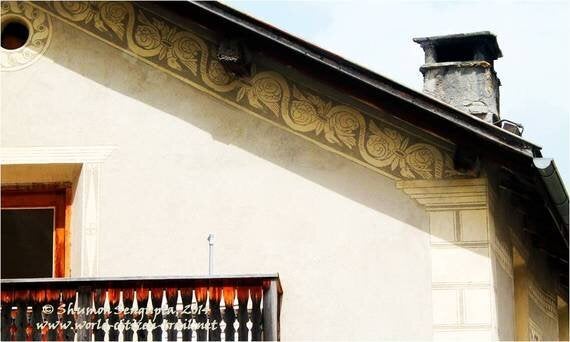

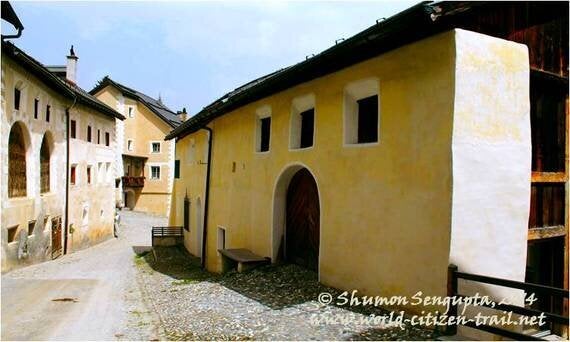
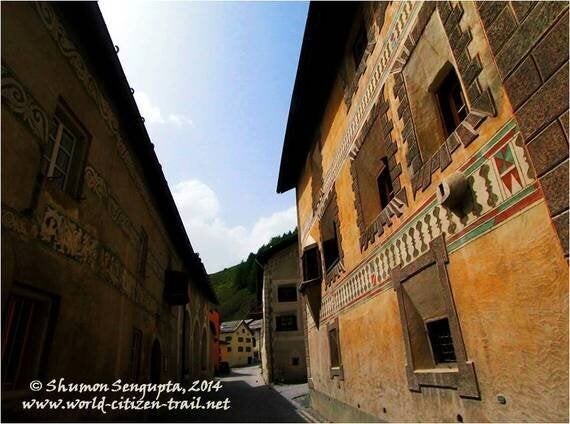
We found the most famous (rather flamboyant) 'Sgraffito' house in Ardez right on the main street, close to the church. It was built way back in 1647 and is decorated with a large and elaborate mural depicting the story of Adam, Eve and the devil in the form of a snake.
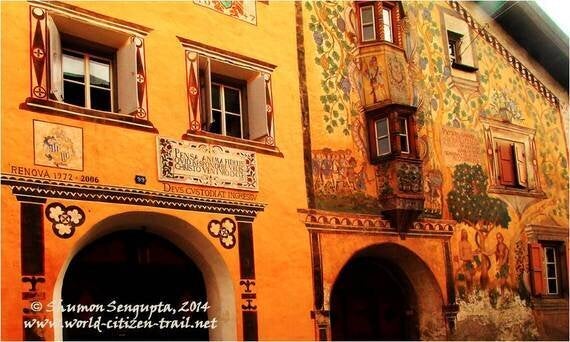
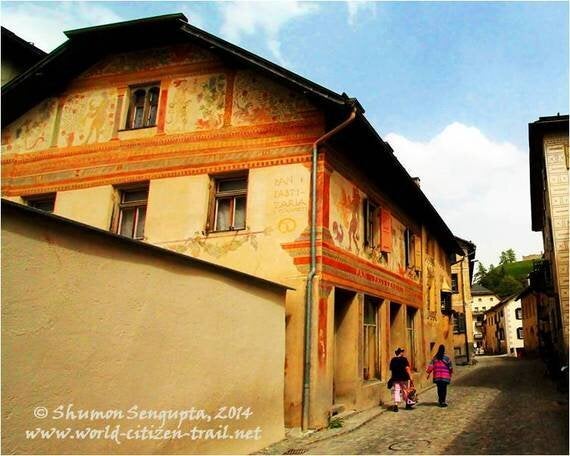
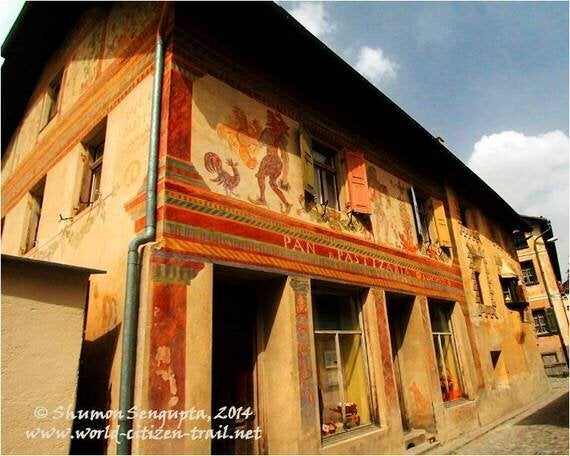
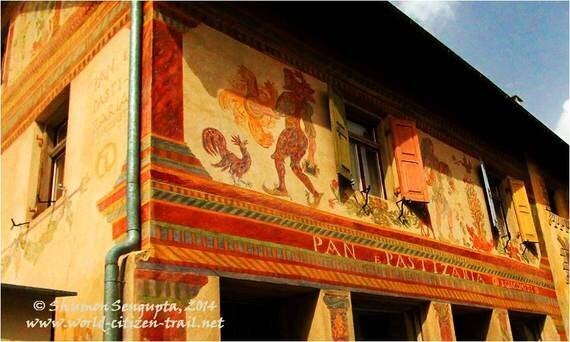
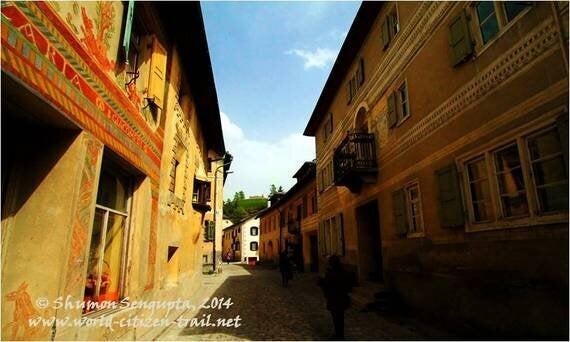
The history of these 'Sgraffito' houses goes as follows. Even hundred and fifty years back, this remote region in particular and Switzerland in general was pretty poor. The Lower Engadine produced very little and population was dependent predominantly on subsistence farming and some animal husbandry. Its people were however enterprising and hardworking. So many enterprising men from the valley went to Italy and France to seek their fortunes there, which they did make in good measure, often as bankers.
Many of them eventually did return to the valley and spent some of their wealth in building these impressive buildings, which they further embellished with beautiful murals. The technique of 'Sgraffito' itself was imported from Florence in Italy in the 15th century, so goes the story.
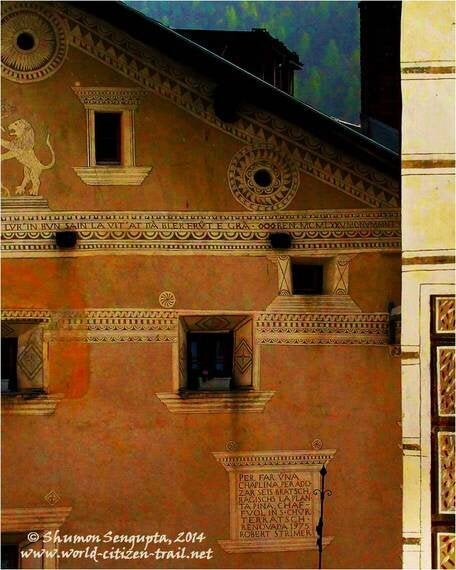
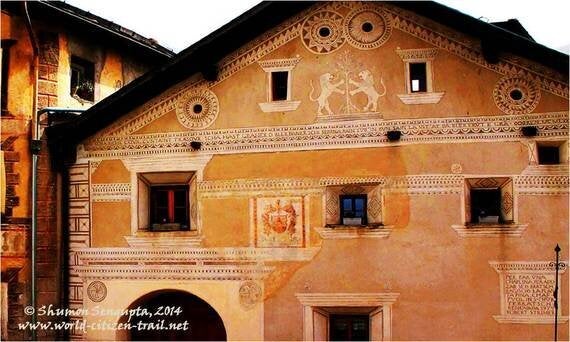
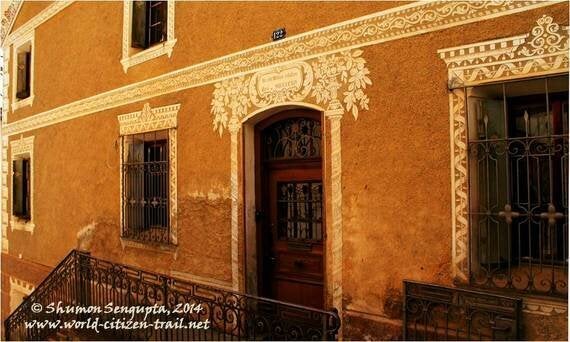

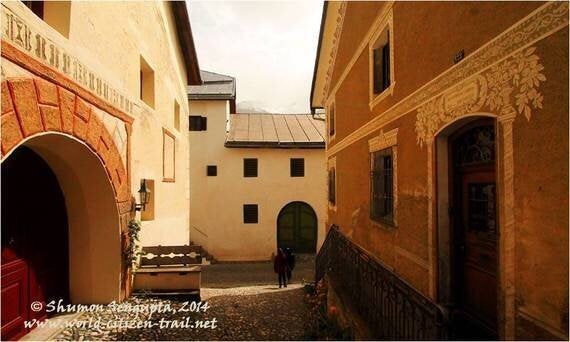
The unique culture of the Romansch speaking people of this valley is not restricted to their language and houses. They have also retained some of their ancient traditions, customs and rituals to this day, which is both fascinating and delightful. For example, on 1st of March every year, people in Ardez celebrate the 'Chalandamarz' during which young boys clang cow bells loudly throughout the village to chase away the winter and its "evil spirits" (sic). And they sing songs to welcome the spring. Now how exceedingly beautiful is that!
And then, on the 24th of June every year, there is another very interesting community ritual, probably related some ancient fertility rite. And this is celebrated only in Ardez.
Young boys visit their neighbors and every girl and young woman in the house is expected to gift an egg to the young boys visiting specially for the purpose. And in case there are no eggs left to be given to a visiting young boy, the boy would sprinkle / dunk the house with water in retribution. How incredibly charming!
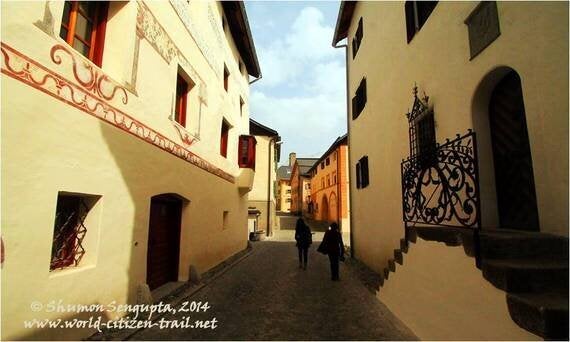
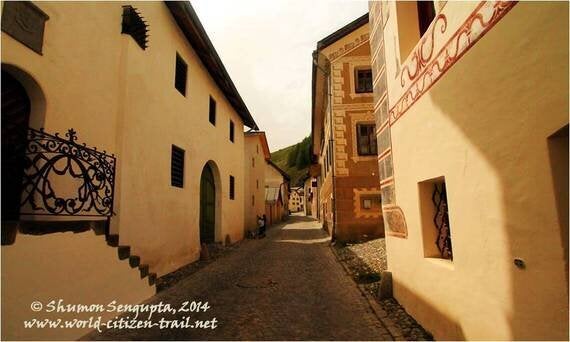
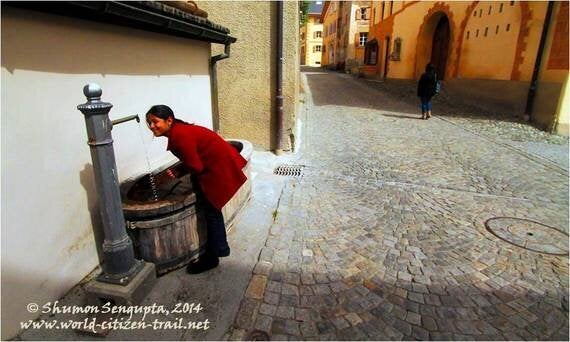
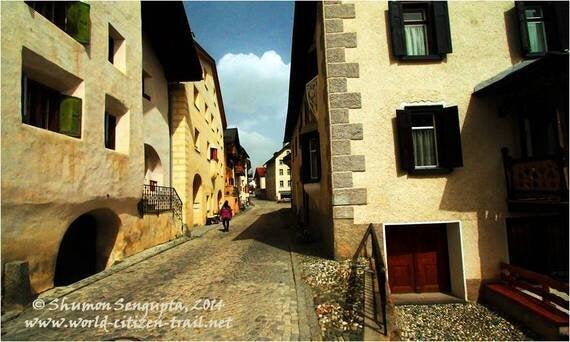
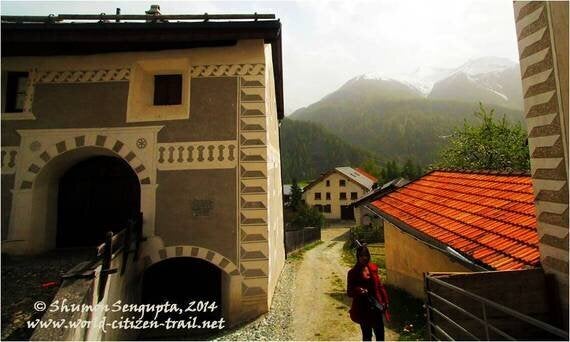

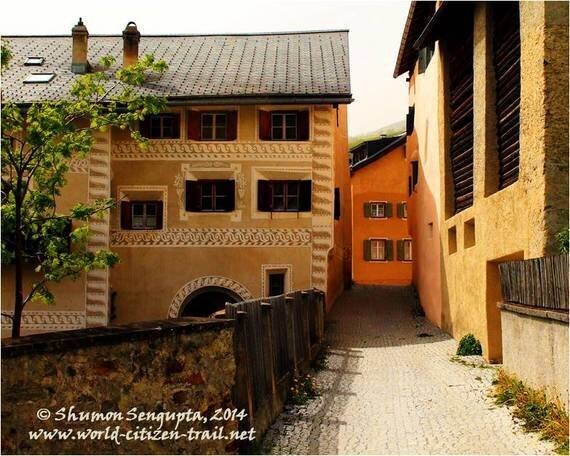
This region of Switzerland is characterized by rolling meadows, spectacular alpine peaks and quaint little villages that seem to pop straight out of pages of children's fairytale books. Our visit to picturesque Ardez village was not special not just because of its incredible location. It was also an exposure to a place and people who had held on to the remnants of fast disappearing ancient culture.


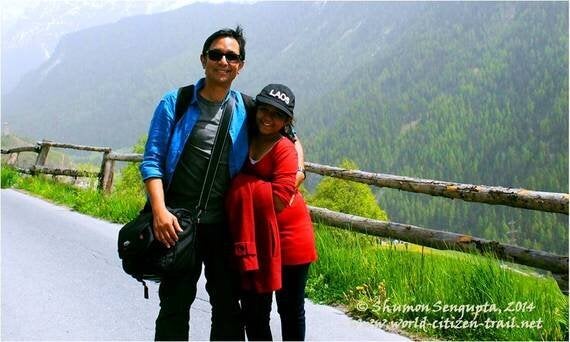
For travelling tips you might want to refer to http://world-citizen-trail.net/guarda-village-switzerland/
